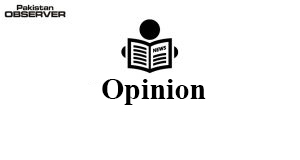Arsalan Ahmed
MORE than a month has gone since curfew is in place, blacking out all communications links from and to Kashmir followed by emotive rhetoric by India, has undoubtedly resulted in raising political temperature in this region placing Pakistan in precarious position as regards her Kashmir policy. Pakistan though is behaving responsibly so far realizing the sensitivities involved while alarming the international community of the grave implications of India’ unilaterally abrogation of Articles 370 and 35-A from the Indian Constitution.
This scenario compels one to dig out the possible motives behind this Indian move and figure out any relationship this initiative may have with local, regional or international dynamics. A few factors may be of some help in this respect. First, the dwindling economic situation in India. Despite political rhetoric by BJP, India’ economic progress is receding – thanks to internal dynamics and depressing economic trends globally. For the first time in six years, the growth rate in India has plunged to 5pc in the first quarter to June down from 5.8pc in the previous quarter and 8pc in the comparable period last year. Since the assumption of office by Modi government in 2014, it is the lowest ever growth rate achieved which is harbinger of likely lower growth by the end of fiscal year in comparison with previous year, obviously damaging the tall claims of BJP government of making India global manufacturing hub and creating millions of jobs every year. The recent move in Kashmir may therefore be seen as well-timed toward distracting attention from all such economic ills. In this regard, the continuous rise in political temperature fueled by emotive statements by BJP leaders reinforces the underlying deep and serious economic ailments Indian economy is going to grapple with. India’ former Chief Economic Advisor, Mr. Arvind Subramanian, has argued that during 2011-12 and 2016-17, India’ GDP growth seems to have been overestimated by 2.5 percentage points. The growth shown during this period is close to 7pc which should have been about 4-5pc. Therefore Modi government’ strategic mantra “bigger the problem, bigger the distraction” is plausible.
Second is the rising trade tension between the US and China that has cast dark clouds on prospects of global growth for which forecast has been revised by IMF from 3.3pc to 3.2pc this year and further down from 3.6pc in 2018. From 1st September 2019, 15pc tariff rate has been effective on $125bn range of Chinese products by the US which is in addition to 25pc existing tariffs on Chinese goods worth $250 billion imposed earlier. By December this year nearly all of China’ exports to the US worth $540bn will be subject to various tariffs by the US. Though China has also retaliated by tariff imposition on various US products in the same spirit, however, these measures have exacerbated trade war tension between the “ruling power” and “rising power” which has impacted not only global growth rates negatively but are likely to affect China’ growth as well which is expected to achieve this year 6pc growth barely. Though this still is viewed as reasonable and appropriate growth rate, however, it is noteworthy that China’s growth rate has continuously been on the decline since the end of three decade long period of double digit growth in 2010.
The escalating trade and economic war with US (which is home to 19pc of China’ exports), continued political riots in Hong Kong (with 12pc of exports from China), regional tension in the Persian Gulf (oil procurement source of China) pose serious threats and may affect China on economic and political fronts further decelerating her pace of economic growth deeper than anticipated.
In this scenario, Indian government while analyzing China’ precarious position with respect to existing mounting issues at aforementioned frontiers embarked on killing two birds with one stone, i.e. unilaterally changing status quo in Kashmir stirring up instability in the region not only involving Pakistan directly but also hurting China’ interests negatively in the region by influencing the pace of CPEC. The timing of Indian initiative too matters that coincides with aggravating situation of riots in Hong Kong, thus, considering it an opportunity to take full advantage of existing challenges engulfing China. Indian move, therefore, is not only aimed at Pakistan but at China’ containment as well and hence solicits responsible and effective counter response from both China and Pakistan.









